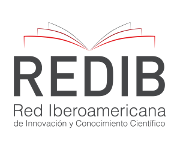
Published
Effect of Glycerin and Urea on the Synthesis of Potato and Cassava Starch-Based Biopolymers: Hardness, Micrography, and Thermogravimetric Analyses
Efecto de la glicerina y la urea en la síntesis de biopolímeros a base de almidón de papa y yuca: análisis de dureza, micrografía y termogravimetría
DOI:
https://doi.org/10.15446/ing.investig.109002Keywords:
Biopolymers, Glycerin, Urea, Starch, TGA, Hardness, Micrograph (en)Biopolímeros, Glicerina, Urea, Almidón, TGA, Dureza, Micrografía (es)
Downloads
Petroleum-derived polymers used in everyday products generate large amounts of waste and negative environmental impacts due to their slow decomposition. To address this issue, other options have been studied, such as biopolymers based on starch, a polysaccharide formed by chains of amylose and amylopectin that can be linked together by heat and water to form a polymeric matrix similar to petroleum-derived plastics. In this study, glycerin and urea were used as plasticizing additives to improve the flexibility of biopolymers. The objective was to expand knowledge on biopolymers and their potential applications as an alternative to petroleum-derived plastics. A quantitative and qualitative factorial experimental design was implemented which consisted of three factors: the percentage of starch type, the percentage of plasticizer type, and the total percentage of plasticizers. Once the biopolymers were synthesized, they were characterized through thermal stability tests using thermogravimetric, hardness, and micrography analysis. The results indicated that glycerin increases the flexibility of the biopolymer, while urea increases its hardness. The working temperature of the biopolymer is below 130 °C, causing no disintegration of the material. In addition, it was identified that the presence of gas inclusions, both internal and superficial, can significantly affect the mechanical properties of the biopolymers. In conclusion, it was demonstrated that starch-based biopolymers with plasticizing additives have the potential to become a viable and sustainable alternative to petroleum-derived plastics in everyday products.
Los polímeros derivados del petróleo que se utilizan en productos de uso cotidiano generan grandes cantidades de residuos y un impacto ambiental negativo debido a su lenta descomposición. Para combatir este problema, se han estudiado otras opciones como los biopolímeros a base de almidón, un polisacárido formado por cadenas de amilosa y amilopectina que pueden enlazarse mediante calor y agua para formar una matriz polimérica similar a los plásticos derivados del petróleo. En este estudio se utilizó glicerina y urea como aditivos plastificantes para mejorar la flexibilidad de los biopolímeros. El objetivo fue ampliar el conocimiento sobre los biopolímeros y sus posibles aplicaciones como alternativa a los plásticos derivados del petróleo. Se implementó un diseño experimental factorial cuantitativo y cualitativo que constaba de tres factores: el porcentaje del tipo de almidón, el porcentaje del tipo de plastificantes y el porcentaje total de plastificantes. Una vez sintetizados los biopolímeros, se caracterizaron mediante ensayos de estabilidad térmica con TGA, dureza y micrografía. Los resultados indicaron que la glicerina aumenta la flexibilidad del biopolímero, mientras que la urea aumenta su dureza. La temperatura de trabajo del biopolímero se encuentra por debajo de los 130 °C, sin generar desintegración en el material. Además, se identificó que la presencia de inclusiones gaseosas, tanto internas como superficiales, puede incidir significativamente en las propiedades mecánicas de los biopolímeros. En conclusión, se demostró que los biopolímeros a base de almidón con aditivos plastificantes tienen el potencial de convertirse en una alternativa viable y sostenible a los plásticos derivados del petróleo en productos de uso cotidiano.
References
[1] S. C. Rasmussen, "From parkesine to celluloid: The birth of organic plastics," Angew. Chem., vol. 133, no. 15, pp. 8090-8094, 2021. https://doi.org/10.1002/anie.202015095 DOI: https://doi.org/10.1002/ange.202015095
[2] G. Murray Tortarolo, M. Serrano Medrano, and M. A. Miranda Ackerman, "Una inundación global de plásticos," Rev. Dig. Univ., vol. 22, no. 4, 2021. https://doi.org/10.22201/cuaieed.16076079e.2021.22.4.10 DOI: https://doi.org/10.22201/cuaieed.16076079e.2021.22.4.10
[3] L. Desidery and M. Lanotte, "Polymers and plastics: Types, properties, and manufacturing," in Plastic Waste for Sustaina-ble Asphalt Roads. Sawston, Cambridge, UK: Woodhead Pub-lishing, 2022, pp. 3-28. https://doi.org/10.1016/B978-0-323-85789-5.00001-0 DOI: https://doi.org/10.1016/B978-0-323-85789-5.00001-0
[4] R. G. Prieto-Ortiz, "Contaminación ambiental por plásticos durante la pandemia y sus efectos en la salud humana," Rev. Colombiana Cirugía, vol. 38, no. 1, pp. 22-29, 2023. https://doi.org/10.30944/20117582.2203 DOI: https://doi.org/10.30944/20117582.2203
[5] M. E. Callapez, "History of the beginnings of the plastics industry in Portugal," ChemTexts, vol. 7, no. 3, art. 17, 2021. https://doi.org/10.1007/s40828-021-00134-1 DOI: https://doi.org/10.1007/s40828-021-00134-1
[6] U. Salahuddin, J. Sun, C. Zhu, M. Wu, B. Zhao, and P. X. Gao, "Plastic recycling: A review on life cycle, methods, miscon-ceptions, and techno-economic analysis," Adv. Sust. Syst., vol. 7, no. 7, art. 2200471, 2023. https://doi.org/10.1002/adsu.202200471 DOI: https://doi.org/10.1002/adsu.202200471
[7] M. Mierzwa-Hersztek, K. Gondek, and M. Kopeć, "Degrada-tion of polyethylene and biocomponent-derived polymer ma-terials: An overview," J. Polym. Environ., vol. 27, pp. 600-611, 2019. https://doi.org/10.1007/s10924-019-01368-4 DOI: https://doi.org/10.1007/s10924-019-01368-4
[8] M. D. M. López-Fernández and A. J. Franco-Mariscal, "Inda-gación sobre la degradación de plásticos con estudiantes de secundaria," Educ. Quím., vol. 32, no. 2, pp. 21-36, 2021. https://doi.org/10.22201/fq.18708404e.2021.2.76553 DOI: https://doi.org/10.22201/fq.18708404e.2021.2.76553
[9] N. Mohanan, Z. Montazer, P. K. Sharma, and D. B. Levin, "Microbial and enzymatic degradation of synthetic plastics," Front. Microbiol., vol. 11, art. 580709, 2020. https://doi.org/10.3389/fmicb.2020.580709 DOI: https://doi.org/10.3389/fmicb.2020.580709
[10] A. S. Al Hosni, J. K. Pittman, and G. D. Robson, "Microbial degradation of four biodegradable polymers in soil and com-post demonstrating polycaprolactone as an ideal com-postable plastic," Waste Manag., vol. 97, pp. 105-114, 2019. https://doi.org/10.1016/j.wasman.2019.07.042 DOI: https://doi.org/10.1016/j.wasman.2019.07.042
[11] S. N. Idris et al., "The degradation of single-use plastics and commercially viable bioplastics in the environment: A review," Environ. Res., vol. 231, art. 115988, 2023. https://doi.org/10.1016/j.envres.2023.115988 DOI: https://doi.org/10.1016/j.envres.2023.115988
[12] J. Zhu et al., “New insights into amylose and amylopectin biosynthesis in rice endosperm,” Carbohydr. Polym., vol. 230, art. 115656, 2020. https://doi.org/10.1016/j.carbpol.2019.115656 DOI: https://doi.org/10.1016/j.carbpol.2019.115656
[13] C. Li, Y. Hu, T. Huang, B. Gong, and W.-W. Yu, “A combined action of amylose and amylopectin fine molecular structures in determining the starch pasting and retrogradation proper-ty,” Int. J. Biol. Macromol., vol. 164, pp. 2717-2725, 2020. https://doi.org/10.1016/j.ijbiomac.2020.08.123 DOI: https://doi.org/10.1016/j.ijbiomac.2020.08.123
[14] C. C. Villa Zabala, “An overview on starch structure and chemical nature,” in Starch-Based Nanomaterials. Cham, Germany: Springer, 2020, pp. 3-9. https://doi.org/10.1007/978-3-030-42542-5_2 DOI: https://doi.org/10.1007/978-3-030-42542-5_2
[15] M. Flórez, P. Cazón, and M. Vázquez, “Selected biopoly-mers’ processing and their applications: A review,” Polymers, vol. 15, no. 3, art. 641, 2023, https://doi.org/10.3390/polym15030641 DOI: https://doi.org/10.3390/polym15030641
[16] A. Avellán, D. Díaz, A. Mendoza, M. Zambrano, Y. Zamora, and M. A. Riera, “Obtención de bioplástico a partir de almi-dón de maíz (Zea mays L.),” Rev. Colón Cienc. Tecnol. Ne-goc., vol. 7, no. 1, pp. 1-11, 2020. https://revistas.up.ac.pa/index.php/revista_colon_ctn/article/view/1134 DOI: https://doi.org/10.48204/j.colonciencias.v7n1a1
[17] R. De Gracia, E. González, K. Vega, V. Montenegro, and N. Marín, “Elaboración de bioplástico a partir de almidón de granos,” Rev. Inic. Cient., vol. 10, no. 1, pp. 16-20, 2024. https://doi.org/10.33412/rev-ric.v10.1.3998 DOI: https://doi.org/10.33412/rev-ric.v10.1.3998
[18] A. A. Ledesma-Ugsiña, V. M. Dalgo-Flores, L. M. Flores-Fiallos, and G. C. Chango-Lescano, “Bioplásticos de almidón de maíz y quinua para uso como envolturas alimenticias bio-degradables,” Dom. Cien., vol. 7, no. 4, pp. 39-56, 2021. https://doi.org/10.23857/dc.v7i4.2080
[19] J. Sears and J. Darby, The technology of plasticizers. Hobo-ken, NJ, USA: Wiley, 1982.
[20] L. L. D. R. Osorio, E. Flórez-López, and C. D. Grande-Tovar, “The potential of selected agri-food loss and waste to con-tribute to a circular economy: Applications in the food, cos-metic and pharmaceutical industries,” Molecules, vol. 26, no. 2, art. 515, 2021. https://doi.org/10.3390/molecules26020515 DOI: https://doi.org/10.3390/molecules26020515
[21] A. Javed, A. Ahmad, A. Tahir, U. Shabbir, M. Nouman, and A. Hameed, “Potato peel waste—Its nutraceutical, industrial and biotechnological applications,” AIMS Agric. Food, vol. 4, no. 3, art. 807, 2019. https://doi.org/10.3934/agrfood.2019.3.807 DOI: https://doi.org/10.3934/agrfood.2019.3.807
[22] V. Florencia, O. V. López, and M. A. García, “Exploitation of by-products from cassava and ahipa starch extraction as filler of thermoplastic corn starch,” Compos. Part B: Eng., vol. 182, art. 107653, 2020. https://doi.org/10.1016/j.compositesb.2019.107653 DOI: https://doi.org/10.1016/j.compositesb.2019.107653
[23] A. Gamage et al., “Applications of starch biopolymers for a sustainable modern agriculture,” Sustainability, vol. 14, no. 10, art. 6085, 2022. https://doi.org/10.3390/su14106085 DOI: https://doi.org/10.3390/su14106085
[24] H. Han et al., “Insight on the changes of cassava and potato starch granules during gelatinization,” Int. J. Biol. Mac-romol., vol. 126, pp. 37-43, 2019. https://doi.org/10.1016/j.ijbiomac.2018.12.201 DOI: https://doi.org/10.1016/j.ijbiomac.2018.12.201
[25] A. Chaos et al., “Plasticization of poly (lactide) with poly (ethylene glycol): Low weight plasticizer vs. triblock copoly-mers. Effect on free volume and barrier properties,” J. Appl. Polym. Sci., vol. 137, no. 28, art. 48868, 2020. https://doi.org/10.1002/app.48868 DOI: https://doi.org/10.1002/app.48868
[26] H. D. Ozeren, M. Guivier, R. T. Olsson, F. Nilsson, and M. S. Hedenqvist, “Ranking plasticizers for polymers with atomistic simulations: PVT, mechanical properties, and the role of hy-drogen bonding in thermoplastic starch,” ACS Appl. Polym. Mater., vol. 2, no. 5, pp. 2016-2026, 2020. https://doi.org/10.1021/acsapm.0c00191 DOI: https://doi.org/10.1021/acsapm.0c00191
[27] S. Agarwal, S. Singhal, C. B. Godiya, and S. Kumar, “Pro-spects and applications of starch-based biopolymers,” Int. J. Environ. Anal. Chem., vol. 103, no. 18, pp. 6907-6926, 2023. https://doi.org/10.1080/03067319.2021.1963717 DOI: https://doi.org/10.1080/03067319.2021.1963717
[28] M. P. Arrieta, “Influence of plasticizers on the compostabil-ity of polylactic acid,” J. Appl. Res. Technol. Eng., vol. 2, no. 1, pp. 1-9, 2021. https://doi.org/10.4995/jarte.2021.14772 DOI: https://doi.org/10.4995/jarte.2021.14772
[29] A. A. Mohammed et al., “Effect of various plasticizers in different concentrations on physical, thermal, mechanical, and structural properties of wheat starch-based films,” Poly-mers, vol. 15, no. 1, art. 63, 2022. https://doi.org/10.3390/polym15010063 DOI: https://doi.org/10.3390/polym15010063
[30] M. Alonso-González, M. Felix, and A. Romero, “Influence of the plasticizer on rice bran-based eco-friendly bioplastics ob-tained by injection moulding,” Ind. Crops Prod., vol. 180, art. 114767, 2022. https://doi.org/10.1016/j.indcrop.2022.114767 DOI: https://doi.org/10.1016/j.indcrop.2022.114767
[31] J. M. Aguilar, C. Bengoechea, E. Pérez, and A. Guerrero, “Effect of different polyols as plasticizers in soy-based bioplas-tics,” Ind. Crops Prod., vol. 153, art. 112522, 2020. https://doi.org/10.1016/j.indcrop.2020.112522 DOI: https://doi.org/10.1016/j.indcrop.2020.112522
[32] S. C. Teixeira, R. R. A. Silva, T. V. de Oliveira, P. C. Stringheta, M. R. M. R. Pinto, and N. D. F. F. Soares, “Glycerol and tri-ethyl citrate plasticizer effects on molecular, thermal, mechanical, and barrier properties of cellulose acetate films,” Food Biosci., vol. 42, art. 101202, 2021. https://doi.org/10.1016/j.fbio.2021.101202 DOI: https://doi.org/10.1016/j.fbio.2021.101202
[33] M. D. R. Salazar-Sánchez, J. A. Cañas-Montoya, H. S. Villa-da-Castillo, J. F. Solanilla-Duque, R. Rodríguez-Herrera, and F. Ávalos-Belmontes, “Biogenerated polymers: An environmen-tal alternative,” Dyna, vol. 87, no. 214, pp. 75-84, 2020. https://doi.org/10.15446/dyna.v87n214.82163 DOI: https://doi.org/10.15446/dyna.v87n214.82163
[34] R. Thakur et al., “Starch-based films: Major factors affecting their properties,” Int. J. Biol. Macromol., vol. 132, pp. 1079-1089, 2019. https://doi.org/10.1016/j.ijbiomac.2019.03.190 DOI: https://doi.org/10.1016/j.ijbiomac.2019.03.190
[35] L. Monroy, D. Fonseca, and C. E. Rodríguez, “Efecto del método de extracción del almidón de Canna indica L. sobre sus propiedades físico-químicas,” Rev. Lasallista Investig., vol. 16, no. 2, pp. 44-52, 2019. https://doi.org/10.22507/rli.v16n2a4 DOI: https://doi.org/10.22507/rli.v16n2a4
[36] D. P. Sanabria et al., “Synthesis of starch powder from different organic wastes: A green approach to a valuable material,” IOP Conf. Ser. Mater. Sci. Eng., vol. 1154, no. 1, p. 012041, 2021. https://doi.org/10.1088/1757-899X/1154/1/012041 DOI: https://doi.org/10.1088/1757-899X/1154/1/012041
[37] R. Jamali, A. Babaei-Ghazvini, E. Nazari, M. Panahi, I. Sha-habi-Ghahfarrokhi, and A. R. Moradi, “Surface characteriza-tion of biodegradable nanocomposites by dynamic speckle analysis,” Appl. Surf. Sci. Adv., vol. 16, art. 100429, 2023. https://doi.org/10.1016/j.apsadv.2023.100429 DOI: https://doi.org/10.1016/j.apsadv.2023.100429
[38] V. Vamadevan and E. Bertoft, “Observations on the im-pact of amylopectin and amylose structure on the swelling of starch granules,” Food Hydrocoll., vol. 103, art. 105663, 2020. https://doi.org/10.1016/j.foodhyd.2020.105663 DOI: https://doi.org/10.1016/j.foodhyd.2020.105663
[39] G. M. Ulfa, W. D. R. Putri, K. Fibrianto, R. Prihatiningtyas, and S. B. Widjanarko, “The influence of temperature in swelling power, solubility, and water binding capacity of pregelati-nised sweet potato starch,” IOP Conf. Ser. Earth Environ. Sci., vol. 475, no. 1, art. 012036, 2020. https://doi.org/10.1088/1755-1315/475/1/012036 DOI: https://doi.org/10.1088/1755-1315/475/1/012036
[40] C. V. V. Martínez, X. S. Z. Murillo, M. H. D. Demera, G. A. B. Briones, and C. A. C. Palacios, “Almidones de cáscara de yuca (Manihot esculenta) y papa (Solanum tuberosum) para producción de bioplásticos: propiedades mecánicas y efec-to gelatinizante,” Rev. Bases Cien., vol. 6, no. 2, pp. 137-152, 2021. https://doi.org/10.33936/rev_bas_de_la_ciencia.v6i2.3293 DOI: https://doi.org/10.33936/rev_bas_de_la_ciencia.v6i2.3293
[41] N. P. Stritzler and C. M. Rabotnikof, Nutrición y alimentación de rumiantes en la región semiárida central argentina. Santa Rosa, La Pampa, Argentina: EdUNLPam, 2019.
[42] M. R. Chuiza-Rojas, A. I. Rodríguez-Basantes, and H. L. Brito-Moína, “Producción de láminas de plástico biodegradables a partir del almidón de arracacia xanthorrhiza,” Dom. Cienc., vol. 6, no. 2, pp. 981-994, 2020. https://doi.org/10.23857/dc.v6i2.1261
[43] S N. Saadatkhah et al., “Experimental methods in chemical engineering: thermogravimetric analysis—TGA,” Can. J. Chem. Eng., vol. 98, no. 1, pp. 34-43, 2020. https://doi.org/10.1002/cjce.23673 DOI: https://doi.org/10.1002/cjce.23673
[44] Z. U. Zango, “Measurement of thermal stability of polymeric cable wires using thermogravimetric analytical technique,” Int. J. Energy Eng., vol. 10, no. 1, pp. 16-21, 2020. https://doi.org/10.5923/j.ijee.20201001.03
[45] Standard test method for rubber property—Durometer hardness, ASTM D2240, American Society for Testing and Ma-terials, 2015.
[46] F. J. Bernal-Ávila, O. H. P. Cuervo, and N. A. S. Guerrero, “Apósitos a base de almidón: revisión sistemática sobre mé-todos de caracterización fisicoquímica y su potencial en la cicatrización de heridas,” Cienc. Tecnol. Agropec., vol. 25, no. 2, 2024. https://doi.org/10.21930/rcta.vol25_num2_art:3612 DOI: https://doi.org/10.21930/rcta.vol25_num2_art:3612
[47] L. A. C. Sares, G. A. Cabrera, D. A. Toro, and V. P. B. Bravo, “Efecto del glicerol como plastificante en películas de almi-dón de maíz modificado,” J. Sci. Res. Rev. Cien. Inv., vol. 8, no. 4, pp. 186-204, 2023. https://doi.org/10.5281/zenodo.10045595
[48] D. N. Quintana, D. P. Sanabria, H. F. Castro, K. L. Roa, R. A. Paredes, and Y. C. Vargas, “Physical characterization of bi-opolymers with starch from potato and cassava organic wastes polymerized in water,” J. Phys. Conf Ser., vol. 2139, no. 1, art. 012015, 2021. https://doi.org/10.1088/1742-6596/2139/1/012015 DOI: https://doi.org/10.1088/1742-6596/2139/1/012015
[49] H. F. Castro, H. I. Farfán, I. V. Abril, R. A. Paredes, and K. L. Roa, “Study of factors affecting hardness behavior of biopol-ymers based on potato and plantain peels: a factorial exper-imental evaluation,” J. Phys. Conf. Ser., vol. 1938, no. 1, art. 012009, 2021. https://doi.org/10.1088/1742-6596/1938/1/012009 DOI: https://doi.org/10.1088/1742-6596/1938/1/012009
[50] H. Ahmad and D. Rodrigue, “High-performance wood-reinforced crosslinked high-density polyethylene composites,” Polym. Eng. Sci., vol. 64, no. 6, pp. 2459-2475, 2024. https://doi.org/10.1002/pen.26702 DOI: https://doi.org/10.1002/pen.26702
[51] G. Galo Silva, M. L. da C. Valente, L. Bachmann, and A. C. dos Reis, “Use of polyethylene terephthalate as a prosthetic component in the prosthesis on an overdenture implant,” Ma-ter. Sci. Eng. C, vol. 99, pp. 1341-1349, 2019. https://doi.org/10.1016/j.msec.2019.01.136 DOI: https://doi.org/10.1016/j.msec.2019.01.136
[52] J. Lai, K. Ramash, C. T. Ratnam, R. Baini, N. A. S. Abdul Samat, and S. Sar-ee, “Physico-mechanical properties poly-propylene/ethylene-propylene diene monomer (PP/EPDM) binary blends,” J. Appl. Res. Technol., vol. 20, no. 5, pp. 546-553, 2022. https://doi.org/10.22201/icat.24486736e.2022.20.5.1419 DOI: https://doi.org/10.22201/icat.24486736e.2022.20.5.1419
[53] M. Karaoui, R. Hsissou, M. Alami, and M. Assouag, “Thermal, flow, and mechanical properties of composites based on polystyrene (PS) and snail shell powder (SSP) bio-filler (PS/SSP),” Iran. Polym. J., vol. 32, no. 5, pp. 621-631, 2023. https://doi.org/10.1007/s13726-023-01151-2 DOI: https://doi.org/10.1007/s13726-023-01151-2
How to Cite
APA
ACM
ACS
ABNT
Chicago
Harvard
IEEE
MLA
Turabian
Vancouver
Download Citation
CrossRef Cited-by
Dimensions
PlumX
Article abstract page views
Downloads
License
Copyright (c) 2024 Daniel Nicolas Quintana Mariño, Diana P. Sanabria Chaparro, Hugo Felipe Salazar, Hugo Fernando Castro Silva, Ricardo Alfonso Paredes Roa

This work is licensed under a Creative Commons Attribution 4.0 International License.
The authors or holders of the copyright for each article hereby confer exclusive, limited and free authorization on the Universidad Nacional de Colombia's journal Ingeniería e Investigación concerning the aforementioned article which, once it has been evaluated and approved, will be submitted for publication, in line with the following items:
1. The version which has been corrected according to the evaluators' suggestions will be remitted and it will be made clear whether the aforementioned article is an unedited document regarding which the rights to be authorized are held and total responsibility will be assumed by the authors for the content of the work being submitted to Ingeniería e Investigación, the Universidad Nacional de Colombia and third-parties;
2. The authorization conferred on the journal will come into force from the date on which it is included in the respective volume and issue of Ingeniería e Investigación in the Open Journal Systems and on the journal's main page (https://revistas.unal.edu.co/index.php/ingeinv), as well as in different databases and indices in which the publication is indexed;
3. The authors authorize the Universidad Nacional de Colombia's journal Ingeniería e Investigación to publish the document in whatever required format (printed, digital, electronic or whatsoever known or yet to be discovered form) and authorize Ingeniería e Investigación to include the work in any indices and/or search engines deemed necessary for promoting its diffusion;
4. The authors accept that such authorization is given free of charge and they, therefore, waive any right to receive remuneration from the publication, distribution, public communication and any use whatsoever referred to in the terms of this authorization.



























